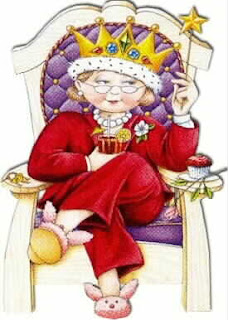Victorian Period (1835-1900)- The Victorian era is oftentimes split into three periods. The Romantic period, 1837-1860, is characterized by yellow gold , filigree work, and the specific symbolism of gems and flowers. During the Grand period, 1861-1879, jewelry styles were influenced by the heavy trading England did with other countries such as China and India. Cameos and mosaics surged in popularity. It was named the Grand period because of the grand designs, stones, and settings used. Great archaeological discoveries inspired a revival of Etruscan, Egyptian, Classical, Architectural and Renaissance styles. The late Victorians in the Aesthetic period particularly fancied miniature creatures like dragons, often wrapped sinuously around a pearl .
Arts and Crafts Period (1894-1923)-Arts and Crafts jewelers rebelled against the mass production brought on by the Industrial Revolution. They formed the Arts and Crafts Exhibition Society in 1888. These jewelers were opposed to any specialization of their craft. They worked mainly in silver using uncut and cabochon stones. Color was very important and many pieces were brightly colored.
Art Nouveau Period (1890-1919)- Art Nouveau jewelers developed the themes of whimsical creatures of fancy and took them to new heights. Exotic flowers, dragonflies, natural sinuous forms, and the female form set amidst a garden were especially popular. The Art Nouveau trend was not limited to the jewellery industry, but was paralleled by literature, architecture, and crafts. A growing interest in mysticism among the public influenced jewelry manufacturer ' s use of gemstones such as opal and moonstone. The artisans experimented with new designs and new materials, like baroque pearls, ivory, copper, and tortoise shell. Enameling became a technique used to create unique pieces of wearable art; with specific enameling techniques such as cloisonne , guilloche and basse-taille.
Edwardian Period (1901-1919)- The Edwardian style, typically in white gold or platinum, placed emphasis on superior craftsmanship and metal working. Invisible platinum settings were very in vogue, as they tended to enhance the brilliance of the stones. One particular setting, called a m ilgrained or millegrained setting, employed thin bands of platinum , or white gold , to hold diamonds that were coated or textured with tiny beads. Platinum was extremely strong and versatile, so these open designs of tiny gems and metalwork created the illusion of handmade lace. Stone cutting in particular made great advancements, and subsequently , a multitude of smaller diamonds could be included in a single piece. The delicate, subdued style also leant itself to pendants: one style called the "Negligee" had two separate drops of differing lengths suspended from a single chain or gem.
Art Deco Period (1920-1935 )- The introduction of Cubism in the world of fine arts brought strong geometric forms, angular patterns, and strong colors into the jewelry designer's vocabulary. Platinum and diamonds, often pave set, employed with other gemstones (rubies, sapphires, emeralds, and onxy) were used in bold, contrasting combinations. Stones were cut into triangles, pentagons, trapezoids, oblongs and emerald-cuts. Carved jade and coral, as well as carved rubies, sapphires, and emeralds, indicate the Asian and Indian influence at this time. Decadence, liberation, and style w as reflected in the flapper attire of the Jazz Age .
Retro Period (1935-1955) - A recent designation for the period (primarily in the forties) when large scale, stylized geometric forms were the rage. Even before World War II, jewelry was changing. The most obvious change was in the color of gold. After nearly 50 years, tastes were moving from white gold back to yellow gold. Government restrictions on metals during the war only reinforced both the change and the introduction of rose gold in jewelry. Rose (pink) gold, set with colored stones, sometimes in floral forms was common. The Retro look was an infusion of old and new -- utilizing the curves of Art Nouveau with the clean simple look of Art Deco, but in a scale not seen before. Big is beautiful when it comes to describing jewelry of the Retro period. Gem material included large aquamarines, citrines and amethysts. Because of the war, synthetic rubies are often found in rose gold jewelry. Virtually identical to naturally grown rubies, synthetic rubies must be distinguished from natural by trained gemologists. Jewelry motifs during this period include bows, ribbons, flowers, birds, patriotic themes, clips, large floral sprays and suites of jewelry.
Modernist Period (1940-1960)- Mainly a post-World War II movement, the Modernist period was a revival of many aims of the Arts and Crafts movement. Emphasis was on hand-crafting and mass production was rejected. Silver was the metal mainly used, along with bronze and copper. Many of the studio jewelers began as sculptors or painters and drew their influence from the fine arts movements such as the German Bauhaus, Cubism, Surrealism, and Abstract Expressionism.
 Dainty and delicate, the beauty of this incredible hand carved pre-ban ivory pin is rivaled only by the natural blossom of the narcissus, after which it is fashioned.
Dainty and delicate, the beauty of this incredible hand carved pre-ban ivory pin is rivaled only by the natural blossom of the narcissus, after which it is fashioned.















